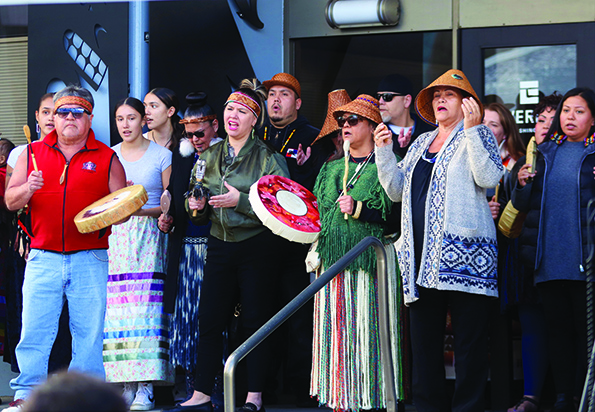
By Micheal Rios
We acknowledge the original inhabitants of this place, the sduhubš, and their successors, the Tulalip Tribes. Since time immemorial, they have hunted, fished, gathered on, and taken care of these lands and waters. We respect their sovereignty, their right to self-determination and honor their sacred spiritual connection with these lands and waters. We will strive to be honest about our past mistakes and bring forth a future that includes their people, stories, and voices to form a more just and equitable society.
Those words are read aloud to begin Everett City Council meetings. Those words are the city’s official land acknowledgement. Those words were approved in 2021 after being developed by the Everett Diversity Advisory Board in partnership with the Tulalip Tribes.
Now, those words have spoken into existence the permanent installation of Coast Salish imagery to adorn the outside of the Everett Municipal Building. Serving as a constant fixture to all those who pass by or enter the city’s primary office building that you are on Native land.
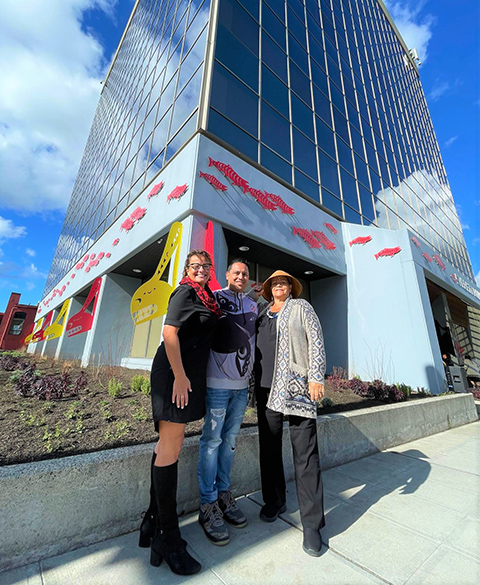
“Our city lies on the historic land of the sduhubš people and their successors, the Tulalip Tribes, and as such, I believe it’s essential for us to pay respect to the original inhabitants of these lands,” said Cassie Franklin, Mayor of the City of Everett. “I’m proud to have James Madison create such a beautiful and impactful piece of art to honor Indigenous peoples and our ongoing commitment to acknowledge their connection to these lands.
“Previously, this building had no color nor any beauty to it, but now it has gorgeous reds and yellows that really bring the building to life, and is sure to catch the eye of our city’s residents and tourists when in the area,” she added.
Tulalip’s neighboring city to the south, Everett, is the seventh-largest city in all of Washington State by population, and it’s by far the largest city in Snohomish County. Established in 1890, the city of Everett is situated on a peninsula. Its city boundaries are designated by the Snohomish River to the east and the Salish Sea to the west.
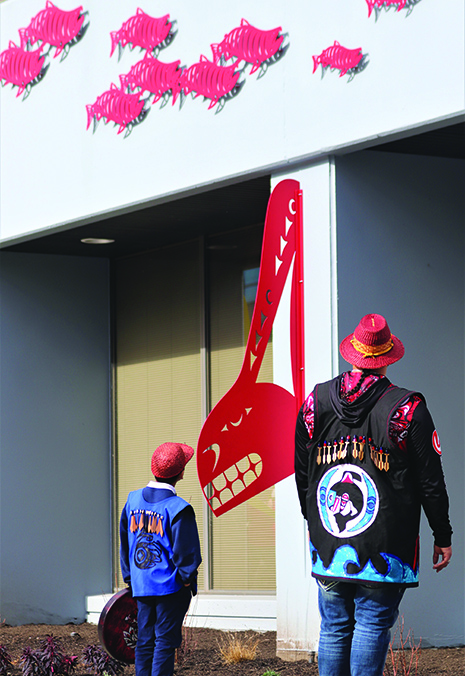
In precolonial times, long before imaginary map borders, the land Everett was built upon was home to our Tulalip ancestors. As a sustenance-based people who thrived with the many offerings of the natural environment, they flourished in the ideal fishing and hunting location.
Tulalip culture bearer Tony Hatch offered further historical insight when speaking at the installations unveiling on February 22 to those in attendance. “Not too far from this very spot was a traditional village of our ancestors that we named our cultural center after, Hibulb. It’s precise location is what’s now known as Legion park. Hibulb was a central hub and primary village of the Snohomish people who we do our best to honor today.”
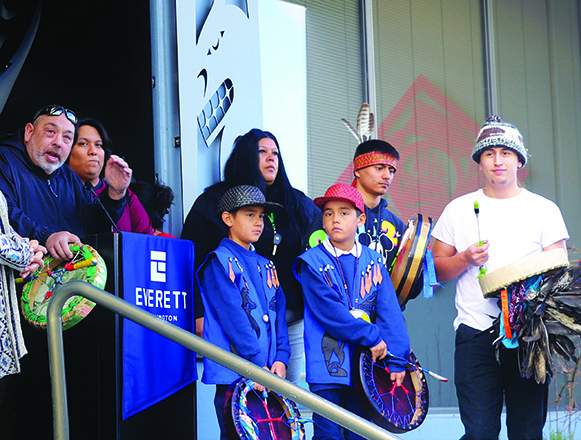
Following Tony’s words, a group of Tulalip citizens offered a traditional song to those Everett residents and city officials who gathered on the picturesque winter day. Those gathered were also treated to a taste of Tulalip fine dining in the form of Ryan’s REZ-ipes.
The enormous, metal fabricated art installation consists of bold red, striking yellow, and stout black colors is impossible to miss for pedestrians and commuters alike. But forged into the durable aluminum and medicine wheel colored pallet is a traditional teaching that has been passed down for generations.
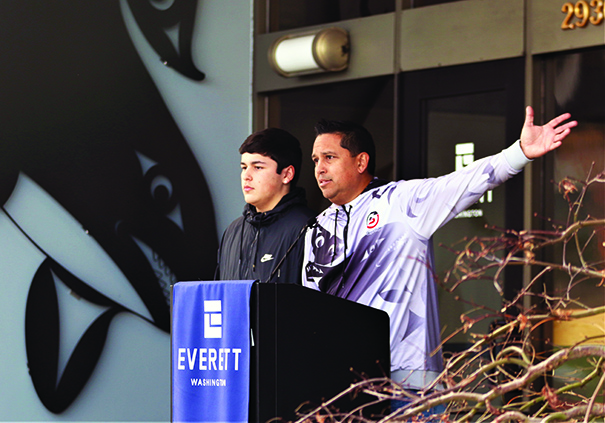
“With this project, I wanted to pay respect to our culture as this region’s first people,” explained Tulalip’s own James Madison. “I tried to showcase our culture and who our people are, while paying respect to the Salish Sea through the blackfish, salmon, and our stories that have been passed on for generations.
“The salmon run that wraps around the building represents Sockeye,” he continued. “They used to be so abundant in our local waters, but now their runs are really short and even desolate in some places. It’s important that we continue to raise awareness of the dwindling salmon runs because their well-being is interconnected with the well-being of both blackfish and human populations. My grandpa, Frank Madison, always told me that it’s up to us to keep the blackfish and salmon alive because if they go away, then humans will go away as well.”

At the heart of this latest collaboration between a Washington State municipality and one of our talented artists is a respect for a cultural heritage that pre-dates the urban landscapes that have taken over Coast Salish territory. As the physical manifestation of a land acknowledgement and traditional teaching, James Madison’s latest creation serves as a reminder to respect the environment, engage in sustainable practices, and respect the Indigenous peoples who have called this land home since time immemorial.